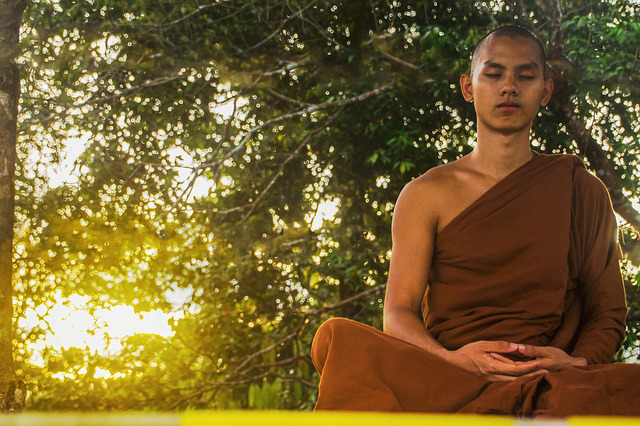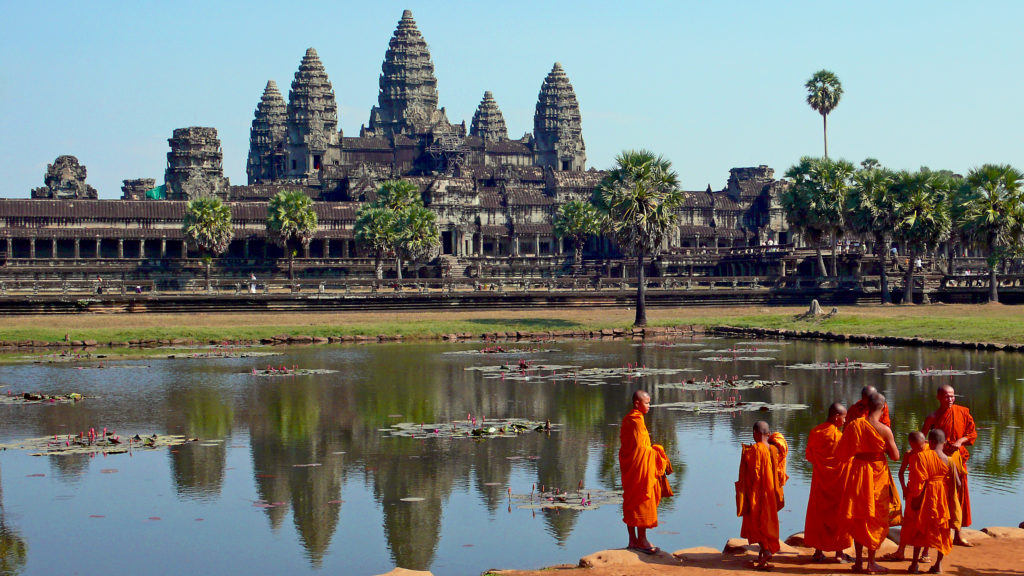There are many different ways to meditate. Even within Buddhism, the various meditation schools don’t all approach meditation exactly the same way. Further, the “best” way to meditate varies from one person to another; there isn’t necessarily any “one size fits all” practice.
However, having participated in a number of “introduction to meditation” classes and having answered lots of questions over the years, I’ve noticed some common problems that often come up, and not just among beginners. So, while the best meditation practice for you may not be exactly the same practice as mine, I can provide some general advice about avoiding these problems — or, how not to meditate.
1. Stress Reduction Versus Spiritual Practice
First, clarify why you are meditating. Meditation has been sold in the West as a stress-reduction technique. It can help reduce stress, but its original purpose is to help you wake up, not chill out.
If you are looking for a safe and natural practice to relieve stress, small daily doses of mindfulness may be just the thing.
If you are interested in Buddhist meditation as a spiritual practice, however, your approach to meditation will be somewhat different. And be advised that the experience of meditation will not always be relaxing. However, if you stick with it you probably will find that you cope with stress and “roll with the punches” much more skillfully than before.
Read More: The Mindfulness Controversy 1: Work and War; The Mindfulness Controversy 2: Mindfulness Therapy.
2. Don’t Expect Bliss
The Sanskrit word for “meditation” is bhavana, which means “mental cultivation” or “mental development.” The word “mental” in this case does not refer just to thinking and reason, but to a wide spectrum of mind-body functions — sensation, awareness, emotions, attitudes, predilections.
Read More: The Misunderstanding of Mind; the Three Kinds of Mind
One way to think of bhavana is that it’s a kind of training. You are training mind to understand and experience in a different way. Contrary to popular notions of Buddhist meditation, however, the point is not to “bliss out” or go to some happy place away from your problems while you meditate. A regular meditation practice will enable you to confront the root causes of your problems and let them go, but this is the opposite of escapism.
If you are practicing in a school of Vajrayana Buddhism you may be instructed to visualize tantric deities or mandalas. However, most of the time in Buddhist meditation you are advised not to push yourself to conjure up visions or out-of-body experiences. You may have unaccountable sensory experiences, but most of the time these are just your neurons misfiring; they don’t mean anything. Don’t attach to them.
What about satori? Isn’t that supposed to be a rush? Perhaps, but there really is such a thing as premature satori, which happens when people push themselves into a deep meditative state before they are properly prepared for it. This is a bit like attempting to compete in a marathon without training for it. The results will be frustrating and best and dangerous at worse.
3. Don’t Judge
By “don’t judge” I mean don’t judge your meditation practice. If you’ve begun a meditation practice and you are fretting that it isn’t what you expected, stop fretting. If you are doing your best then your practice is fine; it’s your expectations that were screwy. Let them go. (However, see Item 7, below.)
More experienced meditators sometimes judge themselves during intensive meditation retreats. We may find ourselves slogging through meditation periods sleepy or uncomfortable, or unable to focus because we keep thinking about our jobs or marriages or the Visa bill. And when the period ends we are frustrated and unhappy with ourselves, because we think we aren’t doing it right.
This judging is a problem in two ways. One, if we hang on to that negativity it will spill over into the next meditation period and the one after that. Second, the truth is that sometimes the sessions when our knees ache and our mind will not be still are great training. It’s like lifting weights; when you struggle, you’re getting stronger. And sometimes a really “awful” meditation period will be followed by an amazing one. Just don’t judge.
4. Posture Is Important
Some schools of Buddhism are stricter about meditation body positions than others, and most give you a choice of leg positions and may even allow you to meditate in a chair. But that doesn’t mean teachers who insist on a particular body position and who correct you if you slouch are just being anal.
There are two primary reasons why some Buddhist schools make a big bleeping deal about meditation body forms. One reason is that schools in which the practice involves sitting still for long stretches of time have learned there are safe and not-so-safe ways to do that. Especially if you are in less-than-peak physical condition sitting still can be remarkably painful. And if you aren’t doing it right you could damage joints, squeeze organs or cut off circulation in limbs. Many generations of practitioners figured out exactly how to position themselves to avoid serious pain or injury, and this experience has given us the “approved” meditation positions.
The other reason is that body position really does affect meditation experience. Buddhist meditation isn’t something you do only in your head; it engages the entire body and mind. Experienced meditators nearly always come to appreciate that exactly how the spine is aligned, what hand mudra you use, whether the chest feels “open” or “closed,” all color the mind and can make a huge difference in the meditation experience.
5. It’s Not Outside, It’s Not Inside
Usually in beginner meditation class the teacher will explain that wisdom isn’t “out there” somewhere and is something you must find within yourself. This usually sets us up for a few years of prodding around inside ourselves, so to speak, looking for the elusive E (for Enlightenment) Spot.
The truth is, it’s not outside, it’s not inside. Or it’s both outside and inside; either one. “Outside” and “inside” are arbitrary designations that don’t signify anything important. When you’re ready the E Spot will be everywhere. Just practice.
6. Not Too Tight, Not Too Loose
The Buddha compared practice to a stringed musical instrument. If the strings are too tight they will break; if they are too loose they won’t play notes.
Sometimes people begin Buddhist practice with huge enthusiasm and set impossible meditation schedules and goals for themselves. And they burn out, and quit. This is like the tight string that breaks. And others sometimes don’t commit to practice and only meditate occasionally; this is being too loose.
People who are trying to fit a meditation practice into a life already stuffed with job, family and other obligations are advised to set a moderate meditation pace; say, five to ten minutes a day. You can always add time if you want to. But it’s better to meditate for five minutes every day than for two hours every Saturday.
7. The Role of a Teacher
There are many books and websites that provide good instructions for how to meditate. Even so, I strongly recommend seeking the guidance of someone recognized as a meditation master by an established school of Buddhism.
If you are committed to the do-it-yourself ideal, please note that I’m not saying you have to commit your life to a guru and live in an ashram. If may be that your meditation mentor is someone you see only once or twice a year at a weekend retreat. Having someone who knows you and who can give you one-on-one advice when you need it can make a huge difference, however.
Read More: Finding Your Teacher
There really are pitfalls and dangers on the meditation path, and the established traditions have cataloged these pitfalls and have worked out ways to deal with them. Because of the popularity of meditation a lot of people are teaching meditation and leading retreats who have no training in a Buddhist practice tradition and don’t fully appreciate what can go wrong, so watch out for this.
Read More: Buddhist Meditation and the Dark Night
8. Don’t Wall Yourself Off
An important aspect of Buddhist meditation is loosening the bonds of ego. The Four Noble Truths teach us that our problems stem from the delusion that “I” am something enclosed within this skin, and everything beyond this skin is “other.”
For this reason, it’s long been recognized that if we practice only to benefit ourselves it’s probably not going to work. Although we all may begin practice seeking remedy for ourselves, if our practice is sincere we will become more sensitive to the suffering of others and wish to benefit them, also. Otherwise, our meditation practice can amount to marinating in our own egos, reinforcing the self-and-other dichotomy instead of dissolving it.
For this reason, the experience of meditating with others is hugely beneficial. Again, this doesn’t mean you have to join a sangha. Maybe just once a week or so you take part in a meditation group in your community.
One of the potential perils of a solo practice is that practice can become this intensely personal thing that is yours and yours alone and which may be compromised if shared with others. This is a common phase many of us go through, actually, but it’s important to not stick there. One of the fruits of practice is a natural turning away from self-clinging as the wall between self and other dissolves. Sharing practice with others facilitates this.
On the other hand, if you remain stuck in “I can do this by myself” mode, you’re stuck, period. If you find yourself becoming edgy and self-defensive at the idea of meditating with others or consulting with a teacher, consider this a warning sign that there’s an unhealthy amount of ego-attachment in your practice.
Nearly all of us who engage in a meditation practice smack into one or more of these problems eventually; some of us smack into all of them. I hope you find this list helpful.
[This is an article I wrote for the Buddhism section of About.com. However, since About.com has removed it from their servers, all rights revert to me.]




